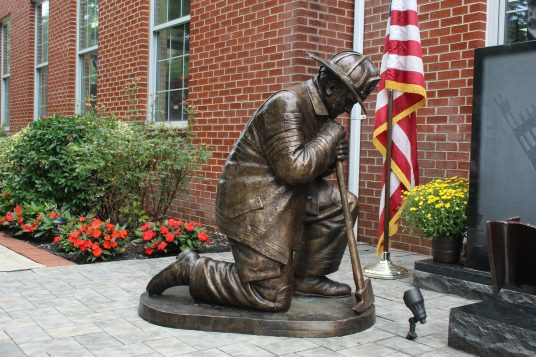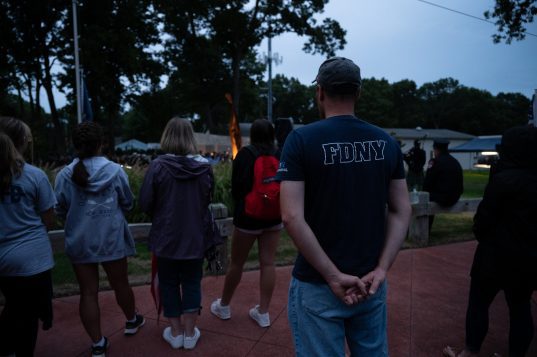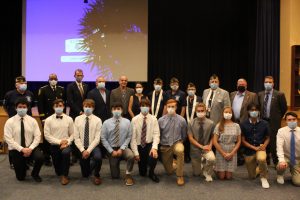“You can be sure that the American spirit will prevail over this tragedy.” — Colin Powell
Those were the words of the former U.S. secretary of state who passed away last year. As a prominent military and political figure, Powell understood the terrible impact that the attacks of Sept. 11, 2001, would have on the nation.
Though the 9/11 attacks were 21 years ago, the American public was and remains forever changed. Yet Powell was confident that America could overcome this tragedy.
This year marks the first time that the U.S. has not had a major military force in Afghanistan since the weeks after 9/11. A year ago, President Joe Biden (D) ordered the final withdrawal of soldiers from this war-torn nation. After the withdrawal, Afghanistan was quickly overrun by the Taliban.
The long-term fighting in Afghanistan contributed to the increase in post-traumatic stress disorder among American servicemen with many other soldiers who were severely wounded fighting in this conflict. For almost two decades, Americans tied yellow ribbons around their trees and kept stars in their windows to represent the military service of their loved ones who served in Afghanistan.
On May 1, 2011, Americans learned during a New York Mets game against the Philadelphia Phillies that Osama bin Laden was finally killed. Flying from military bases in Afghanistan, members of SEAL Team 6 were transported by helicopters to Abbottabad, Pakistan, where they cornered bin Laden in his compound. Chants of “USA” were heard throughout Shea Stadium once baseball fans learned of the death of this al-Qaida leader. The demise of the coordinator of the terrorist plot on 9/11 provided a sense of justice to the victims on that day and their families.
Despite ongoing political polarization domestically, many can still recall the moments of national solidarity in the wake of the attacks. After 9/11, citizens put their political differences aside for the good of the nation, just as they had done after the attack on Pearl Harbor in 1941. Americans in 2001 rallied around the importance of helping local rescue workers and first responders who worked around the clock in Lower Manhattan.
New Yorkers lined the streets with American flags and handed out food and water to the police officers, firefighters, demolition workers and medical personnel who heroically sifted through the debris at Ground Zero. A plume of smoke hung in the air, blocking visibility of downtown Manhattan. Yet within this cloud, rescue workers operated 24/7.
At Shea Stadium, the New York Mets organized supplies that were sent to the rescue workers. Prominent members of the New York Yankees — Derek Jeter, Bernie Williams and Tino Martinez — visited firehouses near the World Trade Center and thanked these public servants for their efforts. Both the New York Giants and Jets invited military and rescue workers to spread flags across their football fields. With tears in their eyes, football fans nationwide watched fighter planes soar through the skies above the stadiums. Rival fans who rooted against New York teams wore “NY” on their hats, showing support for the residents of the City.
Here on Long Island, locals need not look far to see patriotism that stirred from that day of infamy. Countless memorials depict the importance of this date. Pieces of steel that were collected by the NY/NJ Port Authority was given to towns across Brookhaven and Suffolk County that were placed at post offices, schools, libraries, and police and fire stations.
This past spring, the Rocky Point VFW organized the first annual 5K race to support War on Terror veterans as they work to better handle post-traumatic stress disorder.
And so 21 years ago, politics was put aside for the good of the nation. Americans from every corner of this country sent rescue, salvage and fire crews to help the search, and later recovery efforts at Ground Zero.
In a moment of profound despair, our nation came together. Through shared tragedy, people from diverse economic, social and ethnic backgrounds illustrated the meaning of national unity.
America today is a deeply divided nation. In the face of unlikely odds, the American people should never doubt their power to resolve their differences and overcome adversity.
Rich Acritelli is a history teacher at Rocky Point High School and adjunct professor at Suffolk County Community College.



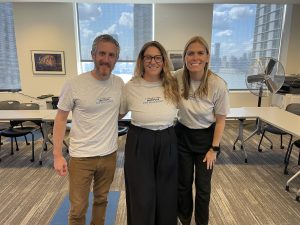

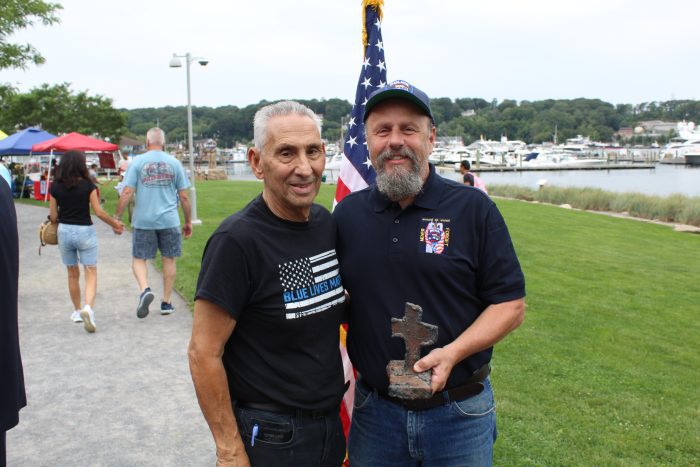
 Anthony Rotoli Jr., president of the lodge, explained the intent of the memorial service. For lodge members, it is an annual reminder of the sacrifices and heroism of first responders who risked their lives in the line of duty. It is also a way to honor the many lost on that fateful occasion.
Anthony Rotoli Jr., president of the lodge, explained the intent of the memorial service. For lodge members, it is an annual reminder of the sacrifices and heroism of first responders who risked their lives in the line of duty. It is also a way to honor the many lost on that fateful occasion.  Larry Johnston, one of the attendees, served with Joseph Vigiano as a patrol officer. He remembers Joseph’s dedication to his profession and his commitment to public service.
Larry Johnston, one of the attendees, served with Joseph Vigiano as a patrol officer. He remembers Joseph’s dedication to his profession and his commitment to public service.




